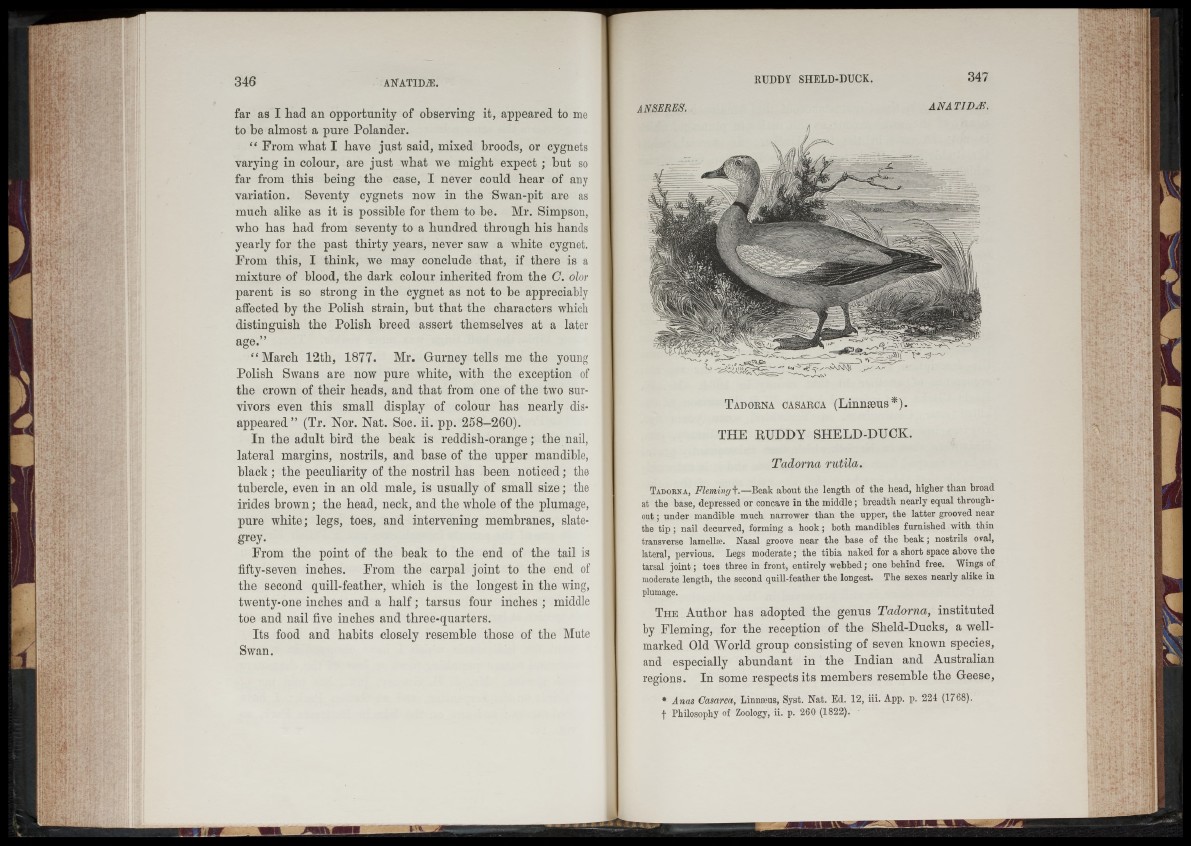
far as I had an opportunity of observing it, appeared to me
to be almost a pure Polander.
“ From what I have just said, mixed broods, or cygnets
varying in colour, are just what we might expect ; but so
far from this being the case, I never could hear of any
variation. Seventy cygnets now in the Swan-pit are as
much alike as it is possible for them to be. Mr. Simpson,
who has had from seventy to a hundred through his hands
yearly for the past thirty years, never saw a white cygnet.
From this, I think, we may conclude that, if there is a
mixture of blood, the dark colour inherited from the C. olor
parent is so strong in the cygnet as not to be appreciably
affected by the Polish strain, but that the characters which
distinguish the Polish breed assert themselves at a later
age.”
“ March 12th, 1877. Mr. Gurney tells me the young
Polish Swans are now pure white, with the exception of
the crown of their heads, and that from one of the two survivors
even this small display of colour has nearly disappeared”
(Tr. Nor. Nat. Soc. ii. pp. 258—260).
In the adult bird the beak is reddish-orange ; the nail,
lateral margins, nostrils, and base of the upper mandible,
black; the peculiarity of the nostril has been noticed; the
tubercle, even in an old male, is usually of small size; the
hides brown; the head, neck, and the whole of the plumage,
pure white; legs, toes, and intervening membranes, slate-
grey.
From the point of the beak to the end of the tail is
fifty-seven inches. From the carpal joint to the end of
the second quill-feather, which is the longest in the wing,
twenty-one inches and a half; tarsus four inches ; middle
toe and nail five inches and three-quarters.
Its food and habits closely resemble those of the Mute
Swan.
T adorna casarca (Linnæus*).
THE RUDDY SHELD-DUCK.
Tadorna rutila.
Tadorna, Fleming+ .—Beak about the length of the head, higher than broad
at the base, depressed or concave in the middle; breadth nearly equal throughout
; under mandible much narrower than the upper, the latter grooved near
the tip ; nail decurved, forming a hook ; both mandibles furnished with thin
transverse lamellae. Nasal groove near the base of the beak; nostrils oval,
lateral, pervious. Legs moderate; the tibia naked for a short space above the
tarsal joint; toes three in front, entirely webbed; one behind free. Wings of
moderate length, the second quill-feather the longest. The sexes nearly alike in
plumage.
T h e Author has adopted the genus Tadorna, instituted
by Fleming, for the reception of the Sheld-Ducks, a well-
marked Old World group consisting of seven known species,
and especially abundant in the Indian and Australian
regions. In some respects its members resemble the Geese,
* Anas Casarca, Linnseus, Syst. Nat. Ed. 12, iii. App. p. 224 (1768).
f Philosophy of Zoology, ii. p. 260 (1822).